Norvic Philatelics - GB New Stamps and Special Postmarks
Inventive Britain - stamp issue 19 February 2015
The United Kingdom has a long and rich
history as an inventive nation. The Inventive Britain stamp issue
celebrates this vital and creative aspect of the national character
with eight key inventions of the past century in a range of
disciplines and applications, from materials to medicine. From the
splitting of the atom to the discovery of penicillin to the jet
engine and in vitro fertilisation, Britain’s creative and
resourceful spirit has not been bound by any particular field,
crossing the breadth of science and technology, engineering and
medicine. The eight inventions featured on the stamps, from the
mighty Colossus to super-strong carbon fibres, comprise only a
handful of the transformative great British inventions from the 20th
and 21st centuries.
|
|

|
Stamp
Set - in vertical se-tenant pairs
1st Class – Colossus; World Wide Web. 81p
- Catseyes; Fibre Optics
£1.28 - Stainless Steel;
Carbon Fibre. £1.47
- DNA Sequencing; i-Limb bionic hand. |
Prestige
Stamp Book.

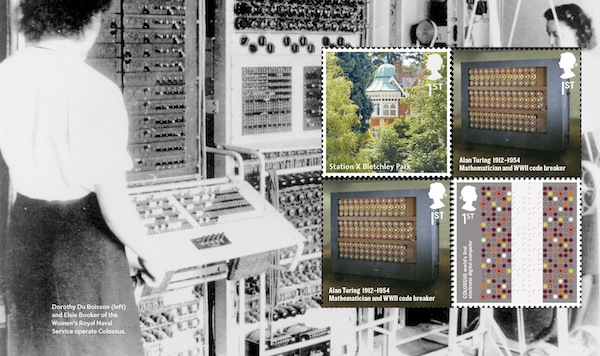
Pane 1 - 2 x 1p, 3 x 2p, 1 x 81p, 2 x 97p Machin definitives
with security codes MPIL M14L
Pane 2 - 1st Class United Kingdom A to Z Stamp Bletchley
Park, 2 x 1st Class Briton of Distinction Alan Turing, 1 x
81p Inventive Britain Stamps
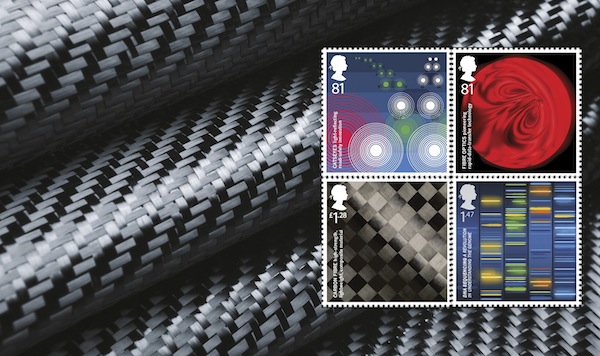
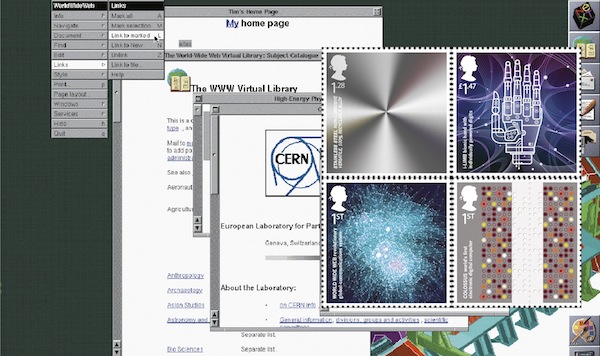
Pane 3 - 2 x 81p, 1 x £1.28 and 1 x £1.47 Inventive Britain Stamps
Pane 4 - 1 x £1.28 1 x £1.47 and 2 x 1st Class Inventive Britain
Stamps
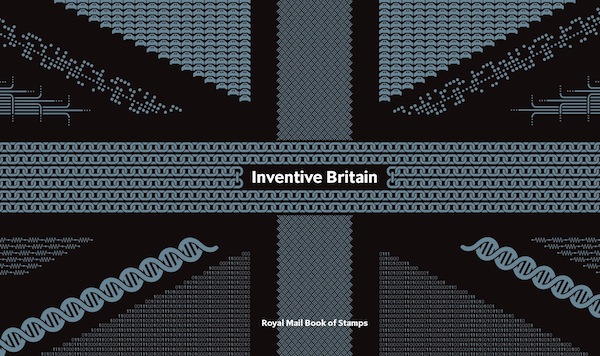
PSB front cover
|
Machin images
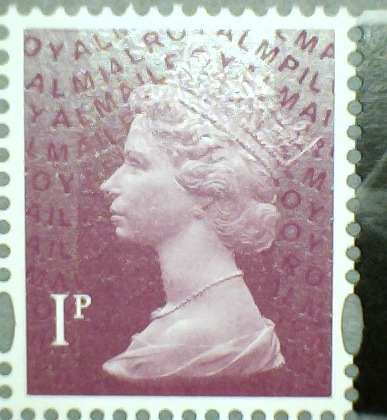
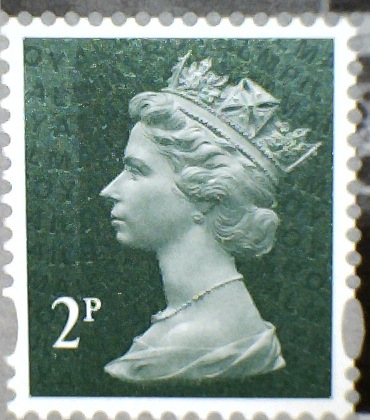
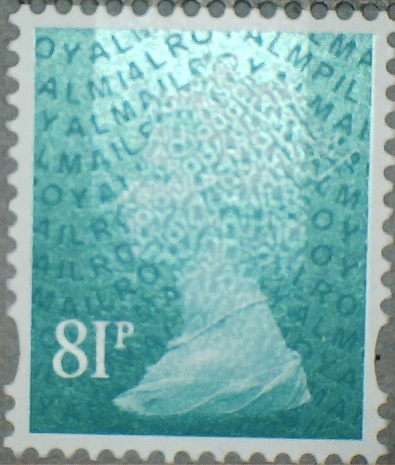
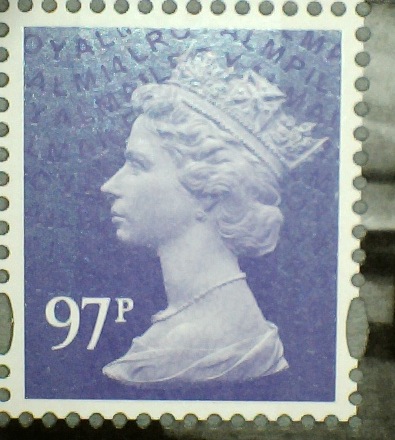
Comparison with earlier stamps.
The colour of the 81p stamps is quite unlike that of its sheet
counterpart, and very close to the Roald Dahl 68p - and the
earlier 20p and 47p.
Royal Mail have acknowledged: "The
81p stamp on the Machin pane of the PSB has been printed in
‘Sea Green’ instead of ‘Holly Green’. This was not a planned
change of colour."
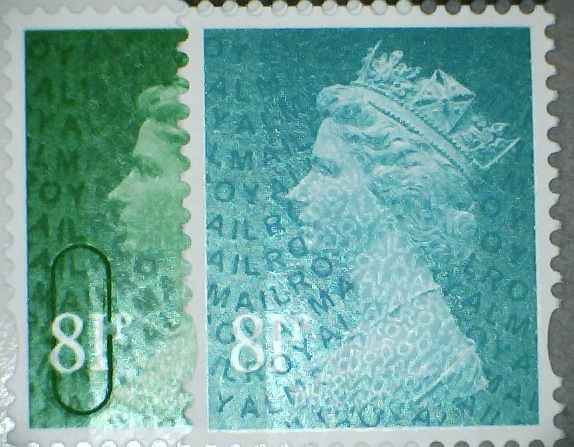
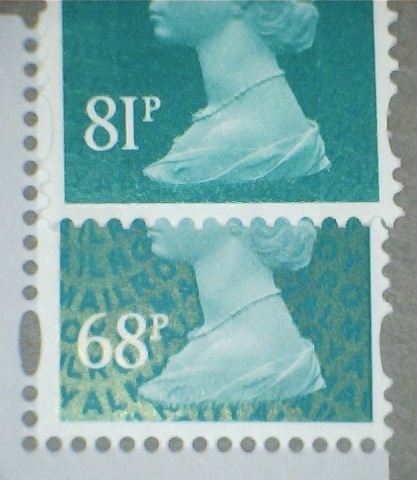 |
The stamps in detail
1st Class Colossus – The world’s first
electronic digital computer
Inventor: Tommy Flowers. The world's first electronic computer
deciphered coded messages sent between Berlin and battlefield commanders via
the Germans' Lorenz cypher machine in World War 2. Flowers was a Post
Office engineer based at Dollis Hill in London, and he constructed the first
Colossus in December 1943.
1st Class World Wide Web – Revolutionary global communications system
Inventor: Tim Berners-Lee. A software Engineer at CERN in
Switzerland in the 1980s Berners-Lee realised that visiting scientists to
the laboratory were limited in the ways in which theycould share
information. He saw the Internet as a way to achieve data
sharing. He created the technology that forms the basis for the World
Wide Web. Protocols he developed include HTML the computer mark-up
language which forms the basis of this and every page, and the way in which
they are linked.
81p Catseyes - Light reflecting road safety innovation
Inventor - Percy Shaw. The inventor of a road-surfacing
business, Shaw invented Catseyes in 1934 but they only took off a decade
later when demand increased considerably during the blackouts of World War
2. The studs are simply four glass beads, covered with a reflective
layer that captures the glow of headlights and beams it back out. The
beads are set in a rubber housing inserted in a cast-iron base. The
flexible rubber casing allows the reflectors to sink down into the road
surface when driven over, which prevents them from damage and cleans them
with rainwater caught in the base.
81p Fibre Optics – Pioneering rapid-data-transfer technology
Inventors Charles Kao and George Hockham. Fibre optic cables
form a global communications network that transmits massive amounts of
digital information - internet, telephone, email - at amazingly fast
speeds. It is the technological foundation of the internet. Kao
and Hockham first demonstrated the possibilities in 1966. The first
trans-Pacific copper cable could handle less than 100 phones calls at once:
today's fibre optic system can carry over a billion calls simultaneously.
£1.28 Stainless Steel – Non-corrosive, versatile, 100% recyclable alloy
Inventor - Harry Brearley. In 1914 Brearley created the
first commercially-viable corrosion-resistant stainless steel, a mix of
iron, carbon and at least 11% chromium. He originally called it
'rustless steel'. Stainless steel is very versatile, being used
for heart valves and scalpels to everyday uses in cutlery, washing machine
drums, road tankers and razors.
£1.28 Carbon Fibre – High strength, lightweight, composite material
Inventor - William Watt. Carbon fibres are thin filaments
integrated into resin and baked to create a reinforced plastic,much stronger
but much lighter than metal. US scientists were researching how to
produce carbon fibre in the 1950s-60sbut it was the Scotsman Watt who
manufactureda superior version of the substance in 1964. Used where
lightness and toughness are important: spacecraft, aircraft, wind turbines
and racing cars.
£1.47 DNA Sequencing – Revolution in understanding the genome
Inventor - Frederick Sanger. In the 1960s-70s Nobel
Prize-winning biochemist Dr Sanger developed a ground-breaking method of
mapping the DNA, the chemical code in our bodies' cells containing the
instructions for creating life-building proteins. By analysing the
strands of DNA Sanger discerned the sequence, enabling later scientists to
sequence the human genome, which in turn helps transform modern medicine and
treatment.
£1.47 i-limb. – Bionic hand with individually powered digits
Inventor - David Gow. A revolutionary bionic hand, the i-limb boasts a
rotatable thumb and individually articulated fingers. Invented by Gow,
a former National Health Service employee, it was launched in 2007. A
user merely needs to think about a handmovement to transmit anelectronic
signal from their brain to manipulate muscles in their arm.
The Inventive Britain Prestige Stamp Book celebrates the genius of the
inventive British mind. Starting with the origins of stainless steel and
concluding with the creation of the i-limb, writer Eugene Byrne reveals the
background to all eight inventions and describes how each was developed and
reached its potential. An informative timeline, relevant to each invention,
also runs throughout the book.
Eugene Byrne is an author and historical researcher based in Bristol. He
edits the local history section of the Bristol Post and is a regular
contributor to newspapers and magazines on history and heritage. He has
written numerous Royal Mail products, mainly on science and technology
subjects, including the Charles Darwin PSB, Concorde Medal Cover, The Royal
Society Presentation Pack and PSB, the Halley’s Comet Commemorative Sheet,
the 2010 Yearpack and the David Livingstone Commemorative Sheet.
Technical details:
The stamps are designed by GBH and printed by
International Security Printers in lithography. Each stamp is 35 x
35mm, and printed in sheets of 30/60 (5 rows of 6).
Design
credits: Colossus, Catseyes, Stainless Steel, Carbon
Fibre, DNA Sequencing and ilimb stamp imagery created by GBH, 2015 © Royal
Mail Group Ltd 2015; World Wide Web – Internet blog map image
© Matthew Hurst/Science Photo
Library: Fibre Optics – CGI illustration by Gecko Animation
Limited; Catseyes is a registered trade mark of Reflecting Roadstuds Ltd;
i-limb is a registered trade mark of Touch EMAS Limited t/a Touch Bionics.
Product range - we will not be stocking these products except for stamps
from the Prestige Stamp Book and on FDC.
Set of 8 stamps Presentation Pack
First Day Cover Set of 8 Stamp Cards
Prestige Stamp Book Coin
Cover
Special Postmarks available on the day of this issue will be shown
here.
These postmarks cannot be obtained after the date of issue. These
images are not be to scale.
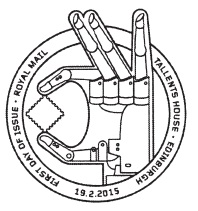
|
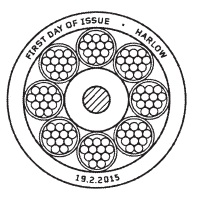 |
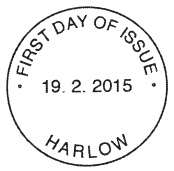
|
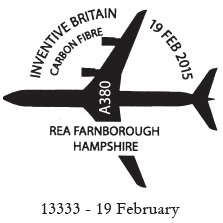
|
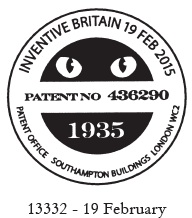
|
Ref FD1505TH
Official Bureau postmark |
Ref FD1505PL
Harlow official first day of issue postmark |
Ref FD1505NP
Harlow non-pictorial official first day of issue postmark |
Ref L13333
(A380 Airbus) Carbon Fibre, RAF Farnborough, Hampshire |
Ref L13332 Patent No 436290, 1935,
Patent Office, Southampton Building, London WC2 |
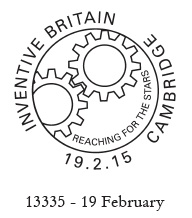
|
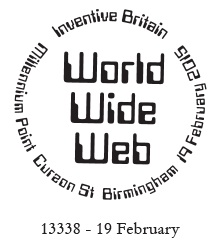
|
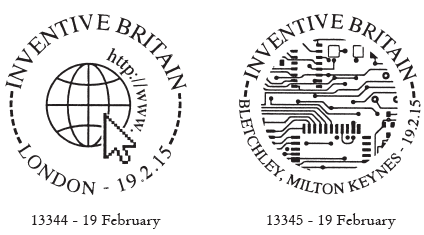 |
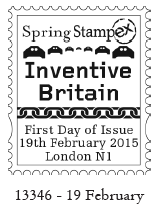
|
| Ref L13335
Reaching for the Stars, Cambridge. |
Ref M13338
Millennium Point Curzon Street, Birmingham |
Ref L13344 London
(Birthplace of Tim Berners-Lee) |
Ref L13345
Bletchley, Milton Keynes
|
Ref L13346 Spring
Stampex Inventive Britain First Day of Issue London N1
|
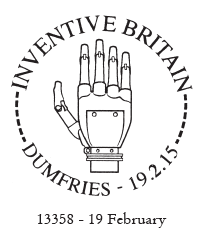
|
<<<<<
Ref S13358
Dumfries (Birthplace of David Gow) |
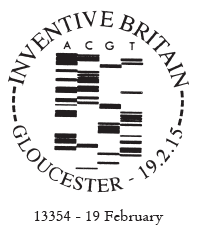
|
<<<<<
M13354 Gloucester (Birthplace of Frederick Sanger) |
|
If you would like us to tell you when
this page is updated, please put your email in the ChangeDetection box
above; if you have any questions about these stamps please email
us.
NB: all emails will be acknowledged in 1-2
days. If you do not receive an acknowledgement please email us from
a different address (eg hotmail, gmail).
This page updated 10 February 2015
Instant
Printing Prices from Webmart






















